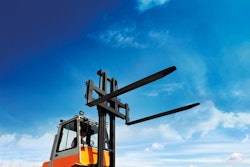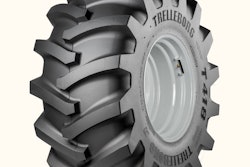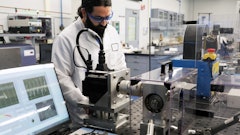
This week at CeMAT 2014, Dana Rexroth Transmission Systems will exhibit R2 hydromechanical variable transmission (HVT) concepts specifically configured for material-handling equipment.
A product of the joint venture between Dana Holding Corporation and Bosch Rexroth AG, the HVT R2 features a modular design that can be adapted for a variety of material-handling applications with net input power from 135 to 195 kW (180 to 260 hp), including reach stackers, empty container handlers, heavy forklift trucks, and RoRo tractors.
The HVT R2 is available for prototypes, and production is expected to begin within the next 12 months, depending on OEM adoption.
“HVT technology is ideally suited for busy, round-the-clock material-handling environments where fuel economy, productivity, and durability are essential,” says Jeroen Decleer, Managing Director of Dana Rexroth Transmission Systems. “Our customers have emphasized the need to reduce total ownership costs, and
performance tests on the HVT R2 have demonstrated its financial benefits as well as advantages in productivity, functionality, and operator comfort.”
As fuel prices rise and emissions regulations become more stringent, HVTs significantly reduce fuel consumption by decreasing engine speeds throughout the duty cycle and at idle, where speeds can be dropped to as low as 600 rpm. Application analysis demonstrates the possibility of further savings without compromising performance through engine downsizing.
Field tests on working vehicles have shown fuel savings of up to 35% over traditional transmission designs, with additional savings possible through further optimization with equipment subsystems.
HVTs enable sensitive, precise vehicle positioning with a stepless drive that offers improved acceleration while maintaining tractive effort. They optimize the operating point of the diesel engine by decoupling engine speed from drive speed, and maintenance costs are reduced by utilizing hydrostatic braking and wear-free directional reversing without clutches.
The HVT R2 is a modular platform that delivers a full suite of configuration options and software controls, such as direct or remote mounting, flexibility in shift control and drive strategy parameters, and the deployment of up to three PTO pumps.
The HVT system helps reduce complexity for equipment manufacturers, since the entire system of gears, clutches, and hydrostatic units is managed by an advanced electronic control unit (ECU) and optimized for efficiency by a single supplier.
The HVT R2 will be exhibited by Dana at CeMAT in hall 25, stand G29.

















